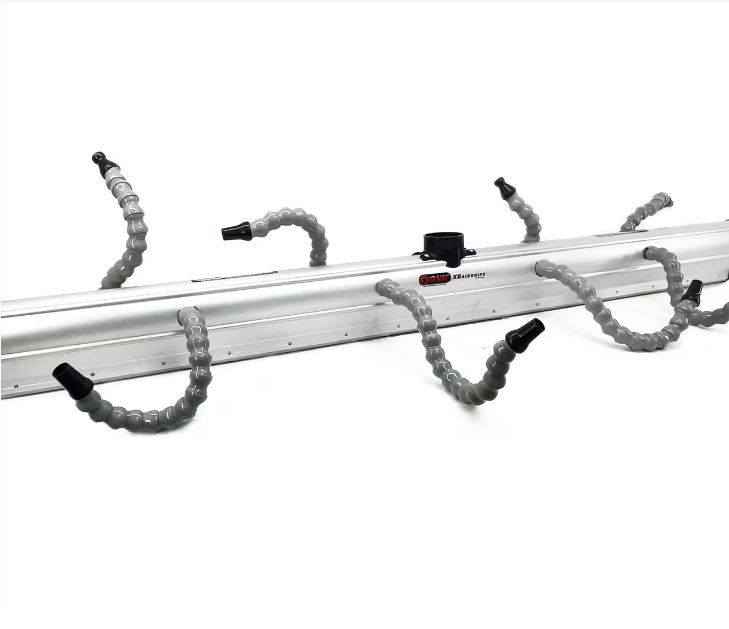A static mixer and an air or gas manifold are used to prepare reactive multi-component liquid mixtures. A liquid dispensing nozzle is formed at the downstream end of the static mixer’s long mixing tube, which contains a mixing element. An air inlet section for receiving an air supply through a conduit, an air dispensing section that, when combined with the outer wall of the liquid dispensing nozzle, forms an air dispensing nozzle, and a mixer support section mounted around the static mixer comprise the inner wall of a one-piece manifold. Air supplied through the air dispensing nozzle atomizes the reactive liquid mixture.
The history of the invention
The current invention pertains to spray nozzle assemblies that can be used with dual cartridges, specifically a disposable spray nozzle manifold assembly that can be used to deliver dual component liquid systems. A dual barrel cartridge unit or other source (such as five gallon pails or five fifty-five gallon drums) containing the two components, a disposable static mixing tube connected to a reusable air manifold, and a reusable air cap connected to a supply of pressurized air are typically included in conventional systems for spraying highly reactive dual multiple ratio component materials. When the cartridge’s contents are released and/or the static mixer becomes fouled, these assemblies are disassembled.
The system is reassembled using a new mixing tube with the cleaned air manifold and air cap after the static mixer is swapped out and the manifold and air cap are cleaned with a solvent. When considering lost production time, the time needed for component disassembly and reassembly can be quite expensive. The development of a cost-effective spray nozzle assembly that could be removed from the air supply using disposable parts and replaced faster and more effectively than existing systems would be beneficial. The invention’s goal is to create a unique and affordable spray nozzle assembly that can be used with dual cartridges to mix and spray two-component liquid systems.
The aforementioned and related items can now be easily obtained in a disposable spray nozzle assembly that can be coupled to a dual cartridge or other source to mix and spray a dual component mixture. This assembly consists of a synthetic resin static mixer with an elongated mixing tube that has an inlet end portion and an outlet end portion that provides a liquid dispensing nozzle with an outer wall, as well as a mixing element placed inside the mixing tube. An inner wall encloses a longitudinal passage through the body portion of a unitary synthetic resin manifold, which has an upstream end portion and a downstream end portion.
For effective drying, blow-off, heating, and cooling in a variety of industries, Sonic Air Systems’ air drying nozzles and air nozzle manifolds provide high-velocity, blower-driven airflow. These air spray nozzles efficiently remove moisture and particles from complicated surfaces, blind holes, and intricate geometries.
Conclusion
Sprayers are made up of numerous parts, including such as tank mixing nozzles, tank rinse nozzles, and electric or manual shutoff valves, electric or manual regulating valves, pressure relief valves, strainers, spray tips, caps, flowmeters, and/or pressure sensors to secure and seal the tip during the spraying process. Ensuring that you are familiar with each of these elements and that if they are operating correctly will lead to improved performance at the application time. Spray tips require extra care because they are in charge of creating and distributing the droplets using the active component of a crop protection product during application A bad selection of spray tips or the application of ineffective tips can result in re-spraying, decreased performance, or even contamination of the surrounding area or environment.

